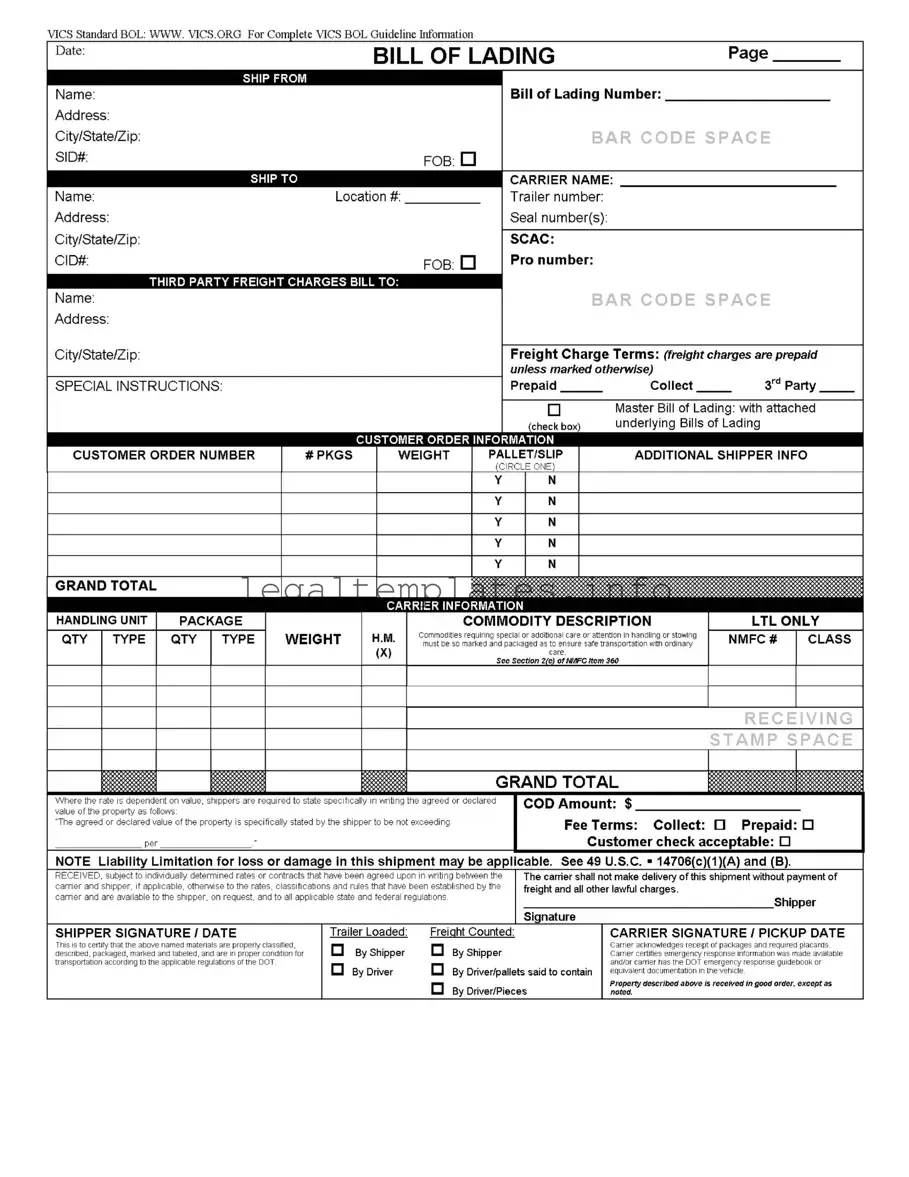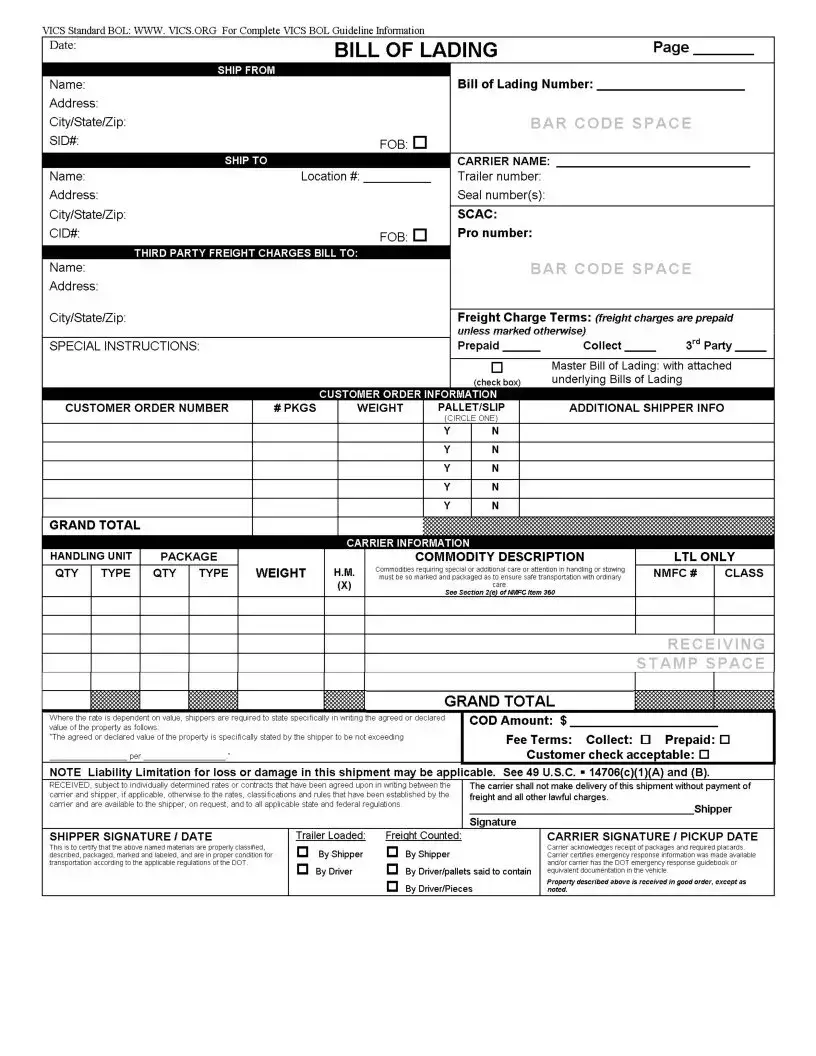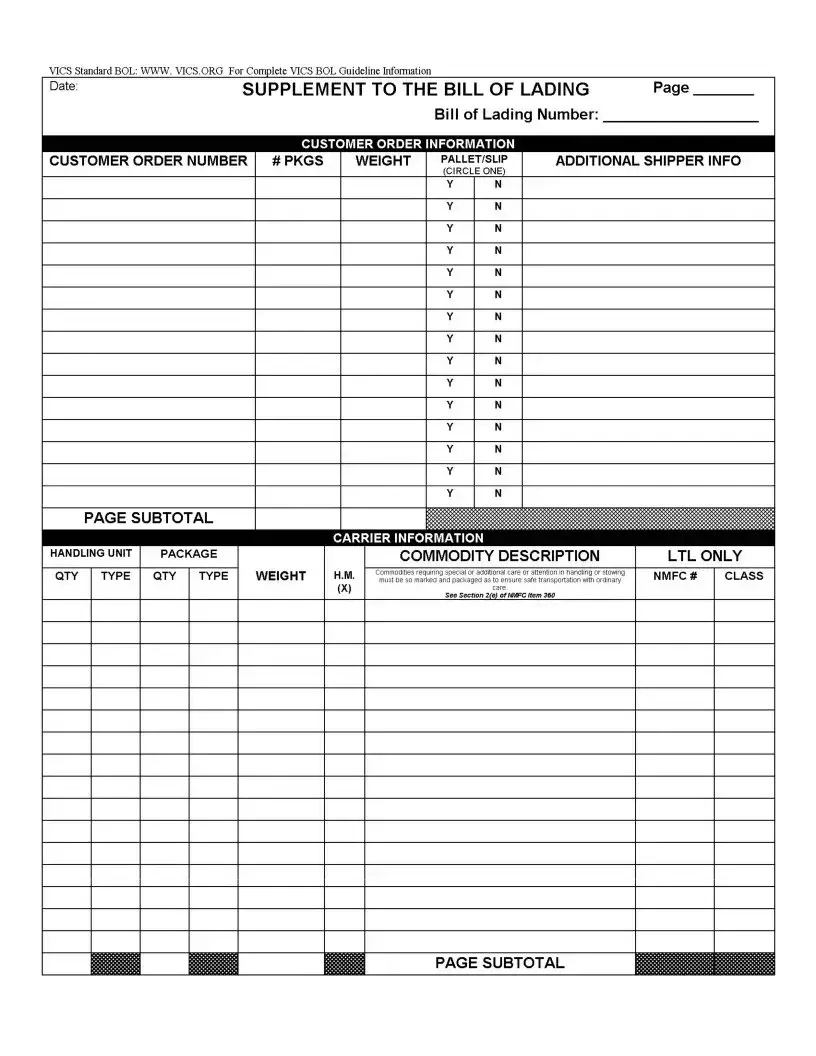Completing a VICS Bill of Lading (BOL) form requires careful attention to detail, but frequently, mistakes happen in the rush to get goods shipped. One common error is not accurately filling in the "Ship From" and "Ship To" sections with complete names, addresses, and contact information. This foundational data ensures that the freight reaches its correct destination without delay, but when it's incomplete or incorrect, it can lead to significant shipping errors or returns.
Another error involves the bill of lading number. This unique identifier is essential for tracking and managing shipments. Mixing up this number, or failing to include it at all, can cause confusion and make it difficult to locate the shipment during transit or upon receipt. It's a small detail with a big impact.
Incorrectly specifying freight charge terms, such as not clearly indicating whether charges are prepaid, collect, or third-party, can lead to billing disputes. Freight charge terms determine who is responsible for paying the shipping costs. When this section is incorrectly filled, it could result in unexpected expenses for either the shipper or the recipient.
Furthermore, when filling out the VICS BOL, a frequent mistake is not properly identifying the nature of the goods being shipped.
Special instructions concerning the handling or stowing of certain commodities are crucial for their safe transport. Failure to make special notations or to properly package commodities as required can result in damage to the shipment or danger to those handling it.
Selecting the incorrect National Motor Freight Classification (NMFC) number and class for the shipment is also a common error. The NMFC number and class affect the freight charges by categorizing the goods based on their transportability. An incorrect classification can not only lead to incorrect billing but may also result in disputes or the need to reclassify freight upon discovery.
Another often overlooked detail is the accurate reflection of the shipment's value, especially when the rate is dependent on value. Neglecting to state the agreed or declared value of the property can lead to insufficient coverage in the event of loss or damage. Accurate valuation is key to protecting the financial interest of the shipment's stakeholder.
Additionally, failing to properly designate responsibility for loading and counting the freight is a frequent oversight. Whether the shipper or the carrier loads and counts can significantly impact liability issues in cases of loss or damage. This designation also affects how claims are processed and resolved.
Incorrectly marking the package type or quantity is another mistake that can cause headaches down the line. Whether it's pallets or individual pieces, miscounts or mislabels can affect freight charges and delivery accuracy. It's paramount for shippers to double-check these details before sealing the BOL.
Lastly, errors in the finalization of the BOL, such as missing shipper or carrier signatures or incorrect dates, can jeopardize the legal standing of the shipment document. These procedural oversights, while seemingly minor, can affect claims, liabilities, and the overall enforceability of the terms outlined in the BOL.
In conclusion, each section of the VICS BOL form plays a crucial role in the successful transportation of goods. By avoiding these common mistakes, shippers can ensure a smoother, more efficient shipping process, reducing the risk of delays, disputes, and additional costs.


